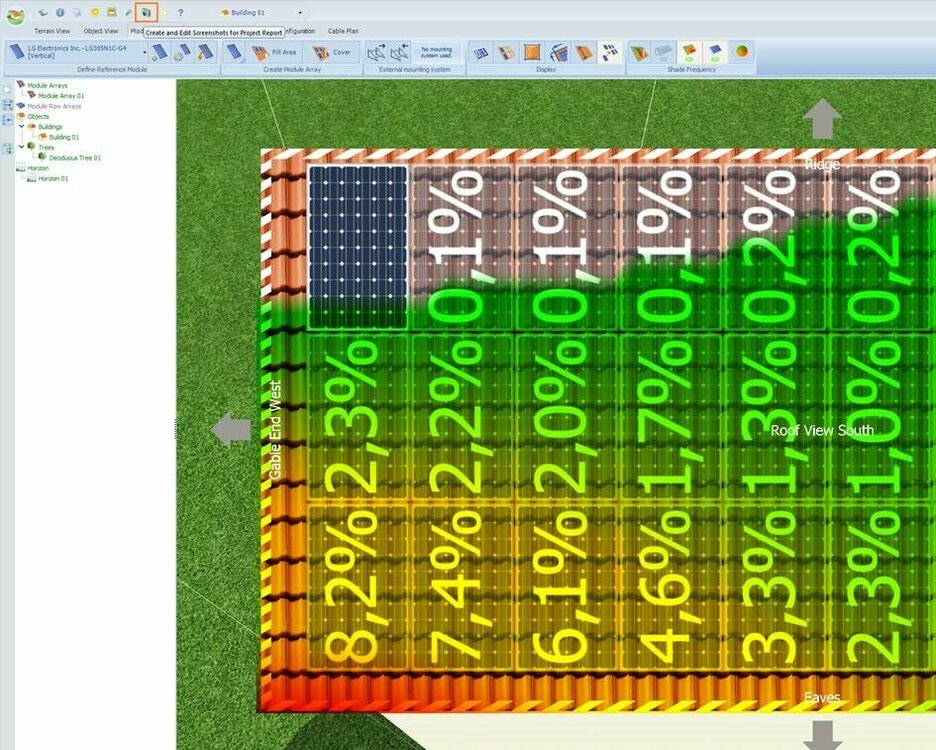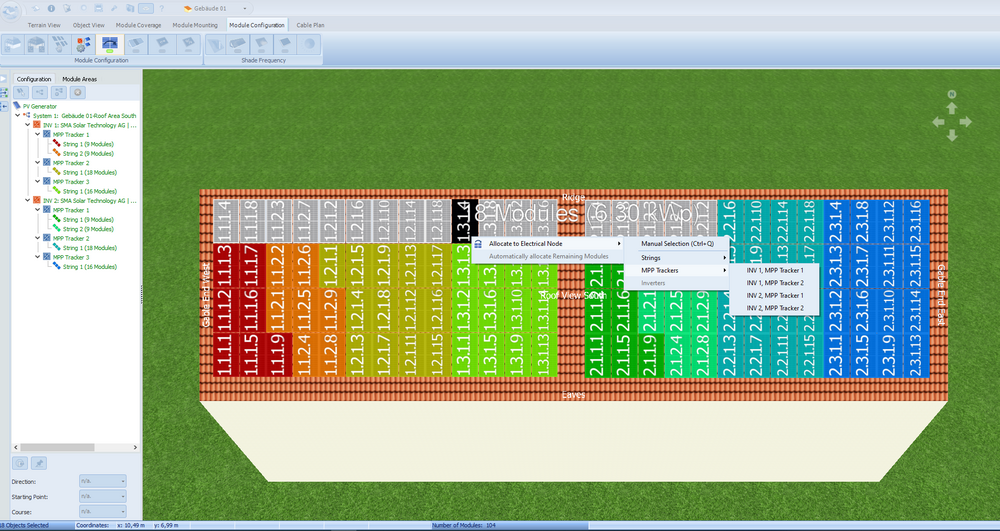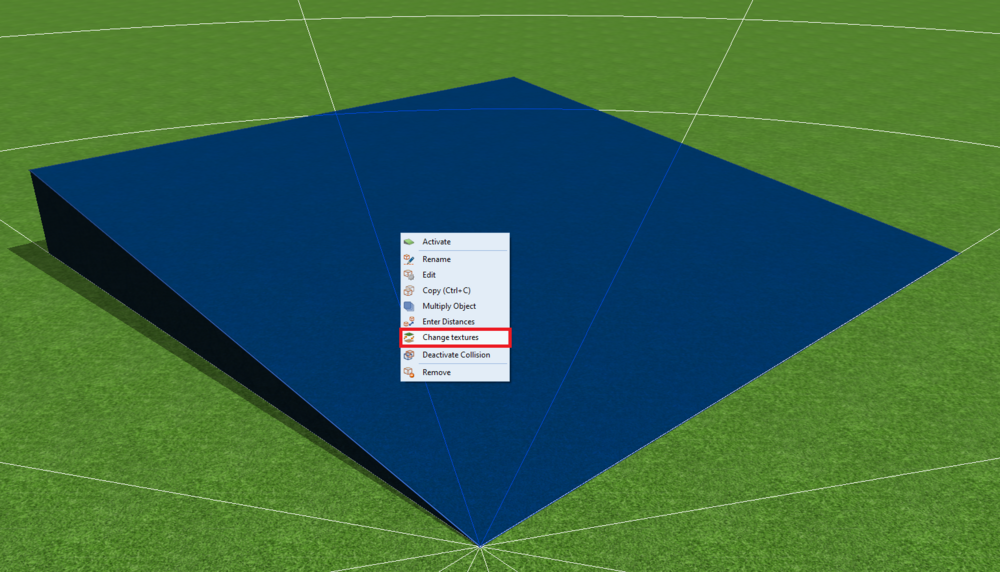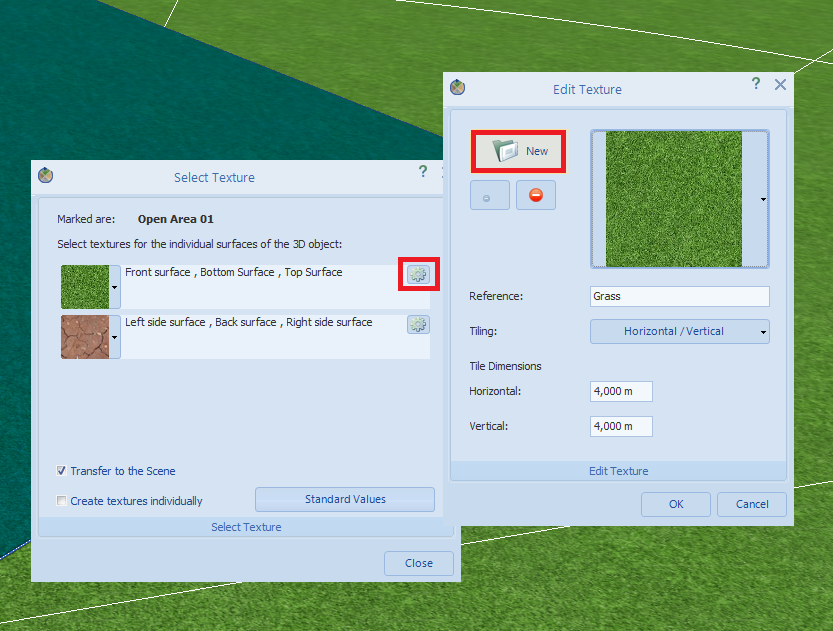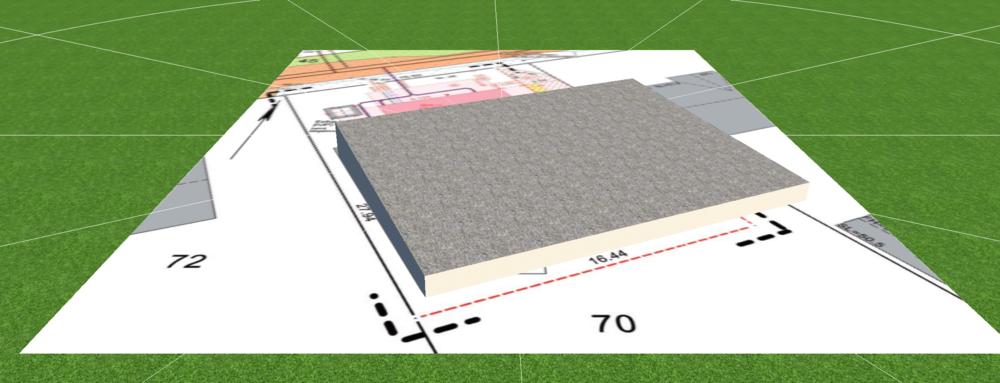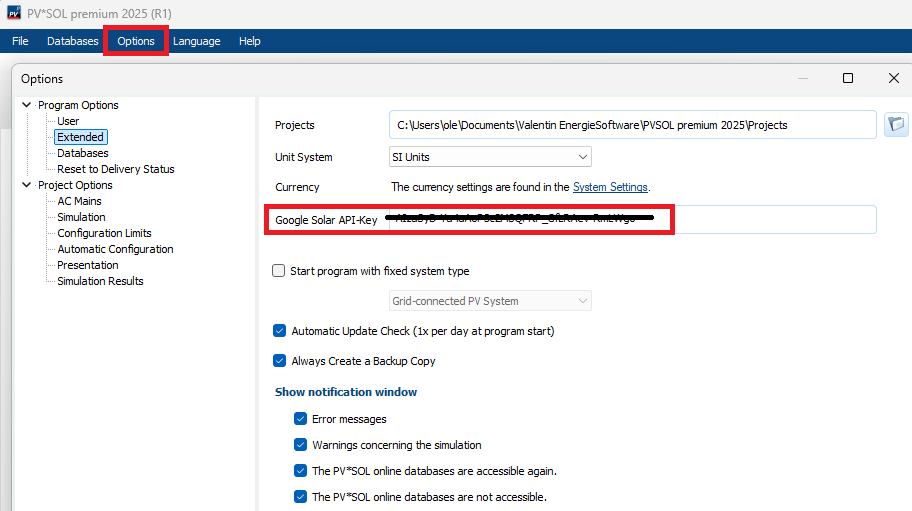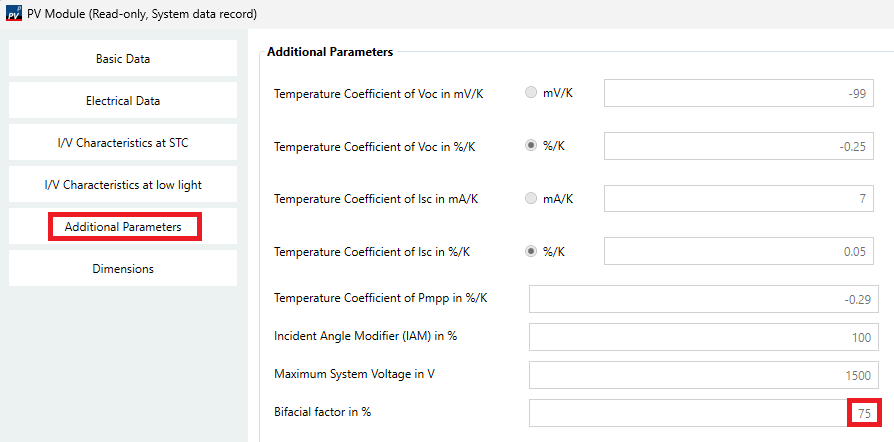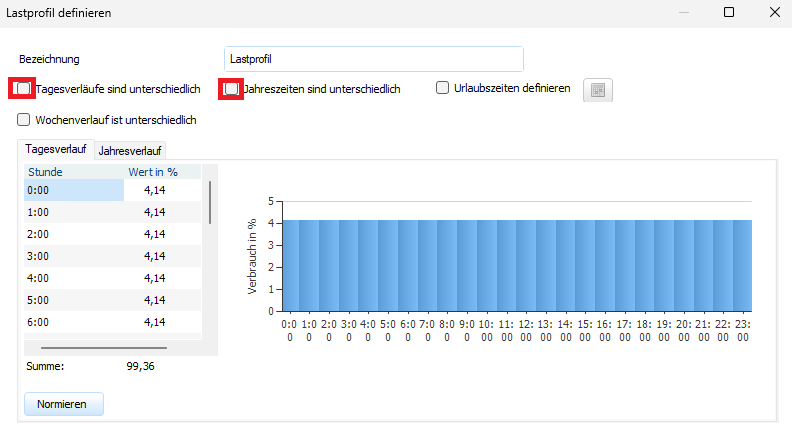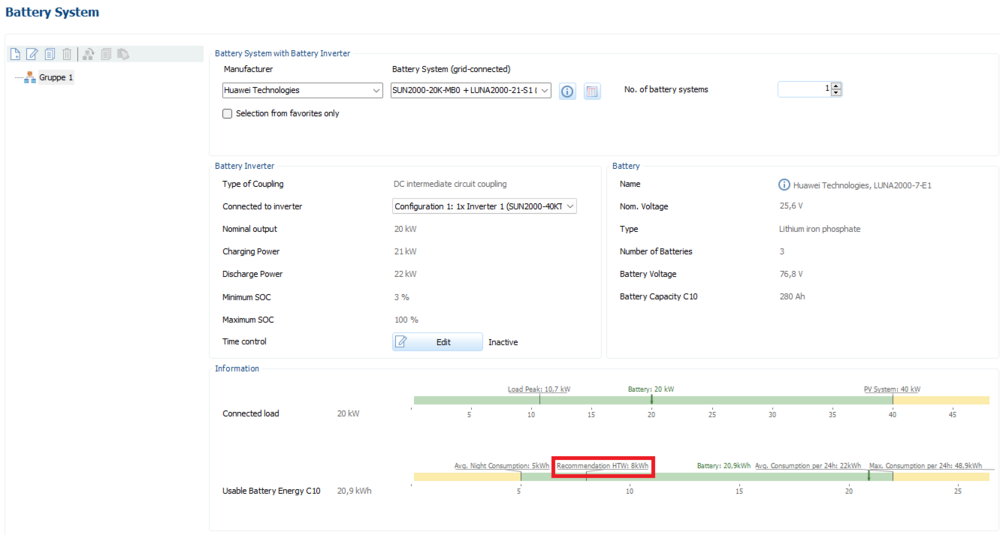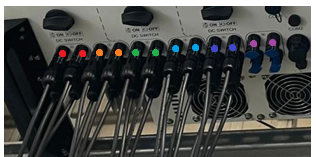-
Posts
408 -
Joined
-
Last visited
-
Days Won
23
Everything posted by hotline_oh
-
Dear Nabeel9802, Thank you for your inquiry. You can use the camera icon to take a screenshot, which is then attached at the end of the presentation.
-
Hallo PH2, danke für deine Anfrage. Anders als PV-Module und Wechselrichter können fehlende Leistungsoptimierer nicht einfach in unserer Datenbank nachgetragen werden. Es sind Änderungen im Programm notwendig. Bezüglich des S500B haben wir Solaredge schon vor mehreren Monaten gebeten, uns die fehlenden Daten zur Aktualisierung zur Verfügung zu stellen. Falls du gute Kontakte zu Solaredge hast, nutze sie gern, um den Prozess zu beschleunigen. Bis dahin kannst du leider nur den S500 nutzen.
- 5 replies
-
- leistungsoptimierer
- datenbank
-
(and 1 more)
Tagged with:
-

Add unconfigured modules to existing inverter configurations
hotline_oh replied to haydn's topic in PV*SOL
Dear haydn, Thank you for your screenshot. Once the inverter configuration is done, you can freely allocate interconnected modules to the inverters, MPP trackers or strings of a system: Click button to go to Edit Module Allocations mode. Select the modules and allocate them to an electrical node using the right mouse button. In the context menu, you will now see the electrical nodes that can accommodate the selected modules. The following conditions apply: The number of selected modules must correspond to the number of modules of the target node. Modules can only be swapped within a module area. When modules are allocated, strings may be created without an allocation. You can fill them automatically. To do this, right-click on a module without an allocation and select: Automatically allocate Remaining Modules. -
Dear Kenneth Maes, Thank you for your inquiry. Do we understand you correctly that the battery is to be charged exclusively from the grid and discharged exclusively into the grid? Do you have no other generators or consumers? PV*SOL is designed to simulate the power generation of photovoltaic systems (with or without batteries and with or without consumers). Unfortunately, it is not possible to simulate batteries without a PV system.
-
Dear Karina Suharevska, Thank you for your inquiries. Unfortunately, there is no Google Solar API coverage for Latvia. You have two options: Either you start the 3D planning with a tilted open area and then insert your map section as a texture. (You set the scale of the map section via the size of the open area). Or you can import the map section (at the correct scale), then drag one (or more) monopitch roofs onto the map section and cover the monopitch roofs. (This has the advantage that you can map different slopes).
-
Dear Alex182, We have corrected our database entry: The Huawei SUN 2000-6ktl-m0 is not designed for parallel operation of the MPPT.
-

Add unconfigured modules to existing inverter configurations
hotline_oh replied to haydn's topic in PV*SOL
Dear haydn, Thank you for your inquiry. Unfortunately, it is not possible to add unconfigured modules to existing inverter configurations. It should also not be possible to accidentally remove some modules from their inverters, as you can only exit the inverter configuration window once you have configured all modules in the selected module areas. If the unconfigured modules belong to a separate module area, you must first select ‘Configure module areas together’. In this way, you cannot forget any modules. Unfortunately, it is not possible to subsequently add another module area to a system section that has already been configured. You can only assign the unconfigured modules to a new inverter. -
-
Dear Kien, For a PV system with 44 modules, connect 44 modules to one inverter. You can then simulate this system. You can find more information in our webinar ‘Introduction to system planning - Part 1 (2D)’.
-

Bifacial calculation for inclination angles lower than 10 degrees
hotline_oh replied to Felix Galan's topic in PV*SOL
Dear Felix Galan, It is not planned to consider the radiation gains of bifacial panels for inclination angles lower than 10 degrees. Bifacial modules are calculated in PV*SOL like conventional PV modules, which are subject to increased irradiation. The increased or effective irradiation is defined via: 𝐸effective=𝐸front+𝐸rear⋅𝐵𝐹 The “bifacial factor” 𝐵𝐹 is a database specification of the PV module. Typical values are between 0.7 and 0.8 (70 to 80 %). The factor indicates what percentage of the power incident on the back of the PV module can be used to generate electricity. You can find more information in our help section. You cannot directly change the bifacial factor of a PV module in our database. However, you can create a new data record by copying an existing module (right-click --> Copy), editing it and saving it again. Further information can be found in the help section. -
Hi Elcor, Thank you for your inquiry. On the ‘Results’ page under ‘PV System Energy Balance’, the results for individual module areas are displayed if the project consists of a maximum of 20 module areas. If there are more than 20 module areas, the results are only displayed here for the entire system. Depending on how many module areas your project consists of, you would have to split it into two or more sub-projects (with a maximum of 20 module areas).
-
Hallo Fred, danke für deine Anfrage. Ob du unterschiedliche Jahreszeiten berücksichtigen solltest, hängt davon ab, welche Art von Verbrauch du hast und ob es starke jahreszeitliche Schwankungen gibt. Bei annähernd identischen Tagesverläufen im gesamten Jahr entfernst du einfach die Häkchen bei "Tagesverläufe sind unterschiedlich" und "Jahreszeiten sind unterschiedlich". Die Definition der Tage im Jahr ist wie folgt (und kann nicht geändert werden): Wintertage: Januar, Februar, März Übergangstage: April, Mai, Juni, Oktober, November, Dezember Sommertage: Juli, August, September Weitere Informationen findest du in unserer Online-Hilfe.
-

Why the search query didn't find. No address didn't return any results?
hotline_oh replied to Min Zaw Lin's topic in PV*SOL
Dear Min Zaw Lin, Thank you for your inquiry. Which search do you mean and what was the search term? -
Dear Roberto Vanin, The database is maintained by the manufacturers themselves. The manufacturers have access to an online database in which they enter their products. We then carry out database updates at regular intervals and the new entries are transferred to the users' databases. Please send us the data sheet to hotline@valentin-software.com, we will then contact the manufacturer and request an entry in our database. However, you also have the option of adding modules yourself. The easiest way is to copy an existing data record and overwrite the values using the data sheet. As there is no information on low-light performance on the data sheet, you must select ‘Standard’. You can also import pan files, if available.
-
Dear Liliana Heiduk, Thank you for your message. The recommendation for the optimum storage capacity can be found here: In co-operation with the HTW Berlin (Berlin University of Applied Sciences), we have integrated a storage size calculator into PV*SOL based on their studies described in the publication in the appendix (German only). Optimale-Dimensionierung-von-PV-Speichersystemen_Quaschning.pdf
-
Dear Alex182, You are correct: According to our database, the Huawei SUN 2000-6ktl-m0 is designed for parallel operation of the MPPT, but the data sheet and the manual do not provide any information about this. We will contact the manufacturer and check whether our database entry is correct.
-
Hallo Hus28, In PhotoPlan ein Zeltdach zu planen, ist etwas umständlich, aber möglich. Du legst die Rechteckfläche auf oder in das dreieckige Dach. Ggf. sparst du die Ecken aus. Falls du die Modulreihen versetzt planen möchtest, legst du eine zweite Modulfläche an. Für die Wechselrichterauswahl wählst du dann „Modulflächen gemeinsam verschalten".
-

Not enough MMP trackers on system for listed inverters
hotline_oh replied to Victoria Ellis's topic in PV*SOL
Dear Victoria, For both inverters, the max. input strings number is twice as large as the number of MPP trackers. Two strings can be connected to each MPP tracker. -

Not enough MMP trackers on system for listed inverters
hotline_oh replied to Victoria Ellis's topic in PV*SOL
Dear Victoria, Thank you for your inquiry. According to the datasheets, the number of MPP trackers for Solis-(100-110)K-5G and S5-GC(50-60)K correspond to the data in our database. -
Hallo David, bedauerlicherweise ist der Ausschnitt auf 200 x 200 Meter begrenzt und kann nicht vergrößert werden.
-
Dear Oliveira, Thank you for your inquiry. Create a second module area for the second module type. In the inverter configuration window, select ‘Configure module areas together’ and select your inverter. You can find more information in our help section.
-

Fehler "Ungültiger Datentyp für UI Theme" beim Öffnen der 3D Visualisierung
hotline_oh replied to Joceblaze's topic in PV*SOL
Hallo Joceblaze, Vielen Dank für deine Bereitschaft, uns beim Testen einer Lösung für den Fehler im UI-Theme zu helfen. Wir werden dir eine neue DLL und weitere Informationen zusenden, sobald wir sie erstellt haben. Wir bitten dich um etwas Geduld. -
Hallo Stefan, bedauerlicherweise ist es nicht möglich, einen Erzeugungslastgang zu importieren. Aber du kannst die Bestandsanlage mit den in PV*SOL hinterlegten Klimadaten simulieren und dann natürlich das Simulationsergebnis mit den Erzeugungsdaten vergleichen. (Auf der Seite "Präsentation" kannst du alle Simulationsergebnisse als Stundenwerte im xls-Format herunterladen.) Bei großen Abweichungen (nach oben oder unten) kannst du an verschiedenen Stellschrauben drehen (geringfügige Änderung des Klimastandortes, des Verschmutzungsgrads, der Moduldegradation, der Kabelverluste etc.), bis der simulierte Ertrag mit dem tatsächlichen Ertrag annähernd übereinstimmt. Anschließend kannst du einen Batteriespeicher hinzufügen. Wir haben dein Anliegen an die Entwicklungsabteilung weitergegeben. An den Möglichkeiten für die Simulation von Bestandsanlagen wird gearbeitet.
-
For professional 3D modelling, we recommend the DJI Mavic 3E device. This drone is suitable for smaller and larger objects in normal lighting conditions. For large installations, we also recommend the Yuneec H600 with E45s camera. Smaller drones are only suitable for small objects and only in good lighting conditions and short shooting distances. The camera's CMOS image sensor should be at least 1' in size. The use of the flight pattern app Drone Harmony is recommended. A list of supported drones can be found here. Our partner solarklima e.K. offers expert training on handling the drone, creating 3D models and importing them into PV*SOL premium.
-
Für die professionelle 3D-Modellierung empfehlen wir das Gerät DJI Mavic 3E. Diese Drohne ist für kleinere und größere Objekte bei normalen Lichtbedingungen geeignet. Für Großanlagen ist auch das Gerät Yuneec H600 mit Kamera E45s zu empfehlen. Kleinere Drohnen sind nur für kleine Objekte und nur für gute Lichtbedingungen und kleine Fotoabstände geeignet. Der CMOS-Bildsensor der Kamera sollte mindestens 1“ groß sein. Empfehlenswert ist die Verwendung der Flugmuster-App Drone Harmony. Eine Liste der unterstützten Drohnen ist hier zu finden. Unser Partner solarklima e.K. bietet eine Expertenschulung zum Umgang mit der Drohne, zum Erstellen der 3D-Modelle und zum Import in PV*SOL premium an.


